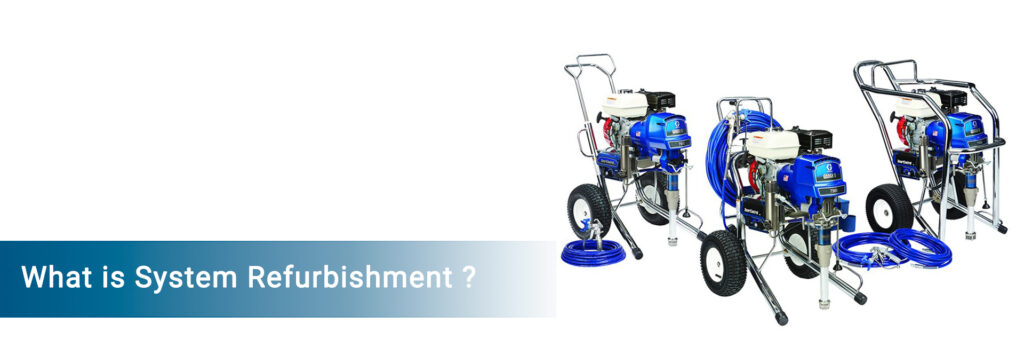In today’s fast-paced world, technology constantly evolves. New and improved systems are released year after year. But what happens to the existing equipment that served you well? System refurbishment offers a sustainable and cost-effective solution, giving your existing systems a fresh lease on life.
What is System Refurbishment?
System refurbishment is the process of restoring an existing system to a functional and efficient state. It involves a comprehensive evaluation, cleaning, repair, and upgrade of various components to extend the system’s lifespan and optimize its performance. Consider it a makeover for your machinery, allowing it to meet your current needs at a fraction of the cost of replacing it entirely.
Benefits of System Refurbishment:
Choosing system refurbishment offers several advantages:
- Cost-Effectiveness: Refurbishing an existing system is significantly cheaper than purchasing a brand-new one. You can significantly extend the life of your equipment while maximising your return on investment.
- Sustainability: By refurbishing a system, you reduce electronic waste and contribute to a more environmentally friendly approach to managing your equipment lifecycle.
- Improved Performance: Refurbishment often involves upgrades to key components, potentially enhancing the system’s speed, efficiency, and overall functionality.
- Reduced Downtime: A well-refurbished system experiences fewer breakdowns and requires less maintenance, minimizing downtime and disruptions to your operations.
- Extended Equipment Life: By addressing wear and tear and replacing outdated parts, refurbishment significantly extends the usable life of your existing equipment.
The System Refurbishment Process:
Wondering what is the refurbishment process? Here’s a look at the typical steps involved in restoring your system:
- Evaluation and Assessment: The first step involves a thorough evaluation of the existing system. This includes a detailed inspection of hardware and software components to identify areas that require attention.
- Cleaning and Maintenance: The system undergoes a comprehensive cleaning process to remove dust, dirt, and debris that could hinder performance. Preventive maintenance tasks are also performed to ensure smooth operation.
- Repair and Replacement: Worn-out or malfunctioning components are repaired or replaced with high-quality parts. This ensures the system functions optimally and meets current safety standards.
- Upgrade and Optimization: Depending on your needs, the refurbishment process might involve upgrading specific components or software to enhance the system’s capabilities and performance.
- Testing and Certification: Once all work is complete, the refurbished system undergoes rigorous testing to ensure it functions as intended and meets all safety regulations.
Applications for System Refurbishment:
System refurbishment is a versatile solution applicable to various equipment types across diverse industries. Here are some common examples:
- Manufacturing Equipment: From production lines to machine tools, refurbishment can extend the lifespan and improve the efficiency of your manufacturing equipment.
- Medical Equipment: Refurbished medical equipment ensures continued functionality and reliable performance within healthcare facilities.
- IT Equipment: Servers, computers, and networking equipment can all benefit from refurbishment, providing cost-effective upgrades and extending their usable life.
- Communication Systems: Refurbishing communication infrastructure can optimize performance and ensure compatibility with evolving technology standards.
Choosing the Right System Refurbishment Service Provider
Selecting a reputable and experienced service provider is crucial for successful system refurbishment. Here are some key factors to consider:
- Expertise and Experience: Look for a company with extensive experience in refurbishing systems similar to yours. Their knowledge and skills are essential for a thorough evaluation and optimal refurbishment process.
- Quality Standards: Ensure the provider adheres to strict quality control procedures and uses high-quality replacement parts to guarantee the refurbished system’s reliability and performance.
- Testing and Certification: Choose a service provider that conducts comprehensive testing and provides certification to ensure the refurbished system meets all safety and operational standards.
- Warranty and Support: A reputable provider offers a warranty on their refurbishment work and provides ongoing support to address any issues that might arise after the system is back in operation.
At Patvin Engineering we are a leading provider of high-quality system refurbishment services. With extensive experience and a team of skilled technicians, we can breathe new life into your existing equipment.
We offer a comprehensive refurbishment process, from initial evaluation to final testing and certification. We use high-quality parts and ensure your refurbished system meets all relevant safety standards. We also provide ongoing support to ensure your equipment continues to function optimally.
Contact Patvin Engineering today to discuss your system refurbishment needs and discover how we can extend the life of your equipment while optimizing its performance.
FAQs
Absolutely! Refurbishment offers significant cost savings compared to purchasing new equipment, while often improving performance and extending the system’s lifespan.
The duration of the refurbishment process depends on the complexity of the system and the extent of work required. However, most refurbishment projects can be completed within a reasonable timeframe.



